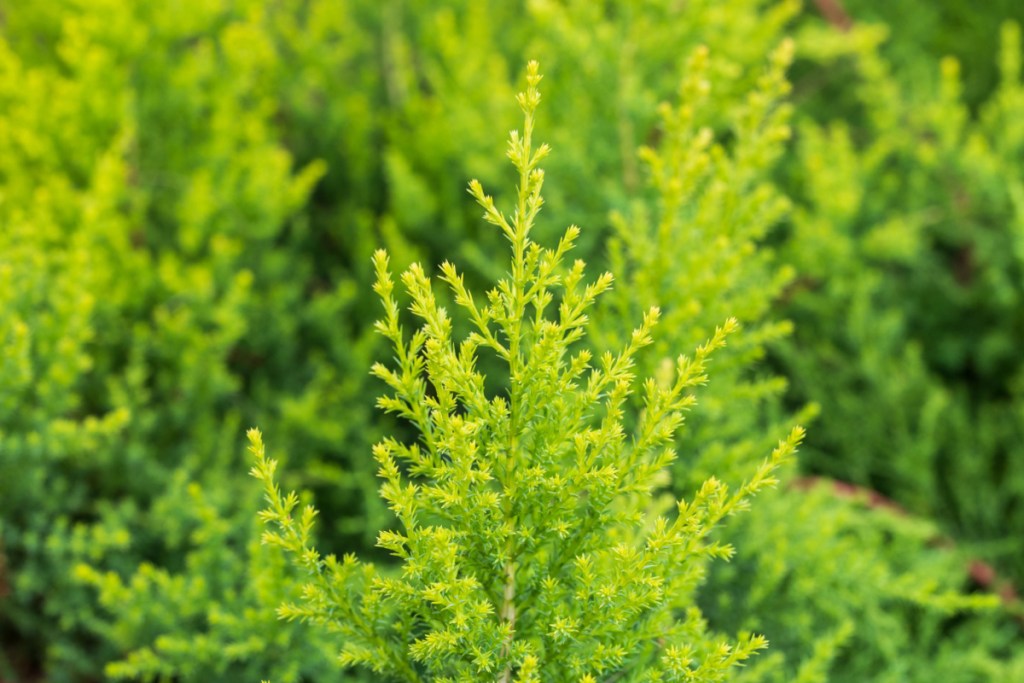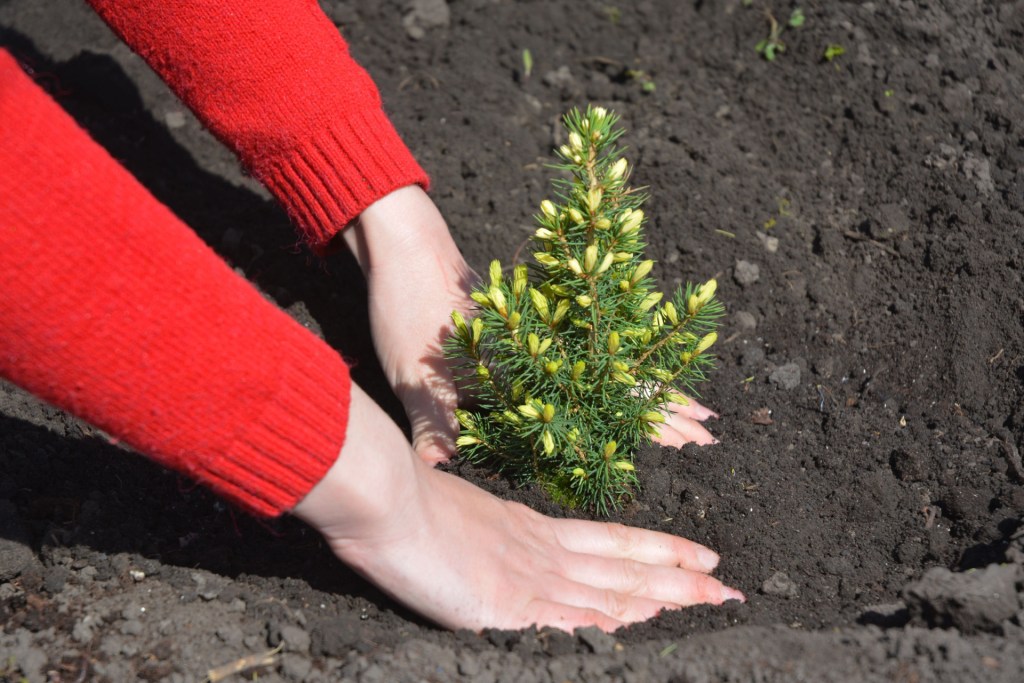Sure, the Rockefeller Center Christmas Tree is the epitome of holly jolly winter foliage, but large Christmas trees don’t need to be the sole focus during the holidays. There are plenty of different ways to incorporate greenery into your December festivities that don’t involve lugging home a 6-foot-tall commitment that sheds all month long.
If you live in a small space or don’t want to budget out money for a tree, you can certainly tap into the Christmas joy with a small potted tree or houseplant! Below, we’ve rounded up our favorite mini Christmas tree alternatives.

Dwarf lemon cypress
Browse the plant section at any grocery store during the holidays, and you’ll likely encounter a vibrant lemon cypress plant. The lemon cypress can grow up to 16 feet tall outside, but the dwarf variety (Cupressus macrocarpa “Goldcrest Wilma”) doesn’t usually grow taller than 3 feet.
The dwarf variety is the perfect size to keep in an apartment, and it exudes a lovely citrusy scent as well. Plus, you can adorn it with ornaments as you would with a real or fake tree. With a lemon cypress tree, your chief concerns are sunlight and water. Its chartreuse needles will look fresh with 6 to 8 hours of direct sun a day along with weekly waterings.

Dwarf Alberta spruce
Though the dwarf Alberta spruce has the potential to grow up to 12 feet tall and spread 5 feet wide, it usually sells at nurseries in its 1 to 2 feet tall baby form. As it only grows 2 to 4 inches per year, it’ll be awhile before you have to worry about it taking up too much room — and you can always prune it as needed.
If you’re getting a small one for the holidays, instead of a small Christmas tree, you could bring it outside during the growing season, although it’s best to gradually harden it off before giving it a permanent home outdoors. That said, it does best in cold winters and mild summers, thriving in zones 3 through 6.
Miniature pine tree succulent
Crassula tetragona might be known as a miniature pine tree, but it’s certainly lower maintenance than a real pine tree. Upon first look, this succulent might not scream Christmas vibes. Still, its fleshy leaves do resemble pine needles while being much sturdier, and its stem becomes woodier with time, much like a Christmas tree trunk. And of course, you could adorn it with tinsel or holiday ornaments for a festive feel. It can grow up the 4 feet tall, but it usually comes in modest 4- to 6-inch pots at nurseries.
As with many succulents, this plant needs 4 to 6 hours of bright light a day — full sun is ideal, but a spot by a southern or western window could work, too. Use well-draining soil and err on the side of underwatering, especially if you bring the plant into your collection during the winter. The soil should dry out before you reach for your watering can.
What’s great about this succulent is that it propagates easily. All you have to do is take a stem cutting, remove a few lower leaves, allow the wound to callus, and root the piece in soil.
English ivy
Ivy makes for wonderful, long-lasting wreath foliage. You can use a wreath form as a trellis for the trailing vines and decorate it with ornaments and bows for a merry look. Ivy requires a moderate amount of care, but it doesn’t particularly need to be babied.
Cool winter weather is ideal for the ivy plant, as it prefers a temperature range between 50 and 70 degrees Fahrenheit. You want to give your ivy medium light and water it when the top inch of your soil feels dry to the touch. It’s better to underwater it than overwater it, but dried-out soil can definitely leave your plant vulnerable to pests, such as spider mites. If you have a heater on in your home, counterbalance it with a pebble tray or humidifier to give your ivy sufficient humidity.

Frosty fern
Although called a frosty fern or a spike moss, Selaginella kraussiana isn’t actually a true fern or moss. Measuring about 6 to 12 inches tall, it features green leaves with frosty, silvery tips which make it an ideal holiday plant. The perfect temperature range for it is between 60 and 70 degrees Fahrenheit indoors, where it does best with bright indirect light.
This plant likes its soil to be consistently moist, so water it when the surface of the soil feels dry. It prefers a humidity of 50% or above, which means you should leave it away from drying heaters and use a pebble tray to maintain the moisture in its surrounding air.
Investing in a Christmas tree isn’t a must during the holidays. It’s not the easiest option for many living spaces, personal budgets, and cleaning schedules, and it’s certainly not the best option for the environment. If you simply don’t want a large tree, take a look at mini Christmas trees and other small, festive houseplants. With proper care, these foliage plants can give your home winter vibes that can last years down the line.
Editors' Recommendations
- Tired of roses? Here are 13 flowers to give instead on Valentine’s Day instead
- How long do Christmas trees last? Here are our tips on keeping them fresh for a long time
- The 6 best types of Christmas trees to fill your home with holiday cheer
- Are mulched leaves good for grass? Here’s how to mulch a lawn full of leaves this fall
- What’s in season at the farmers market this fall





